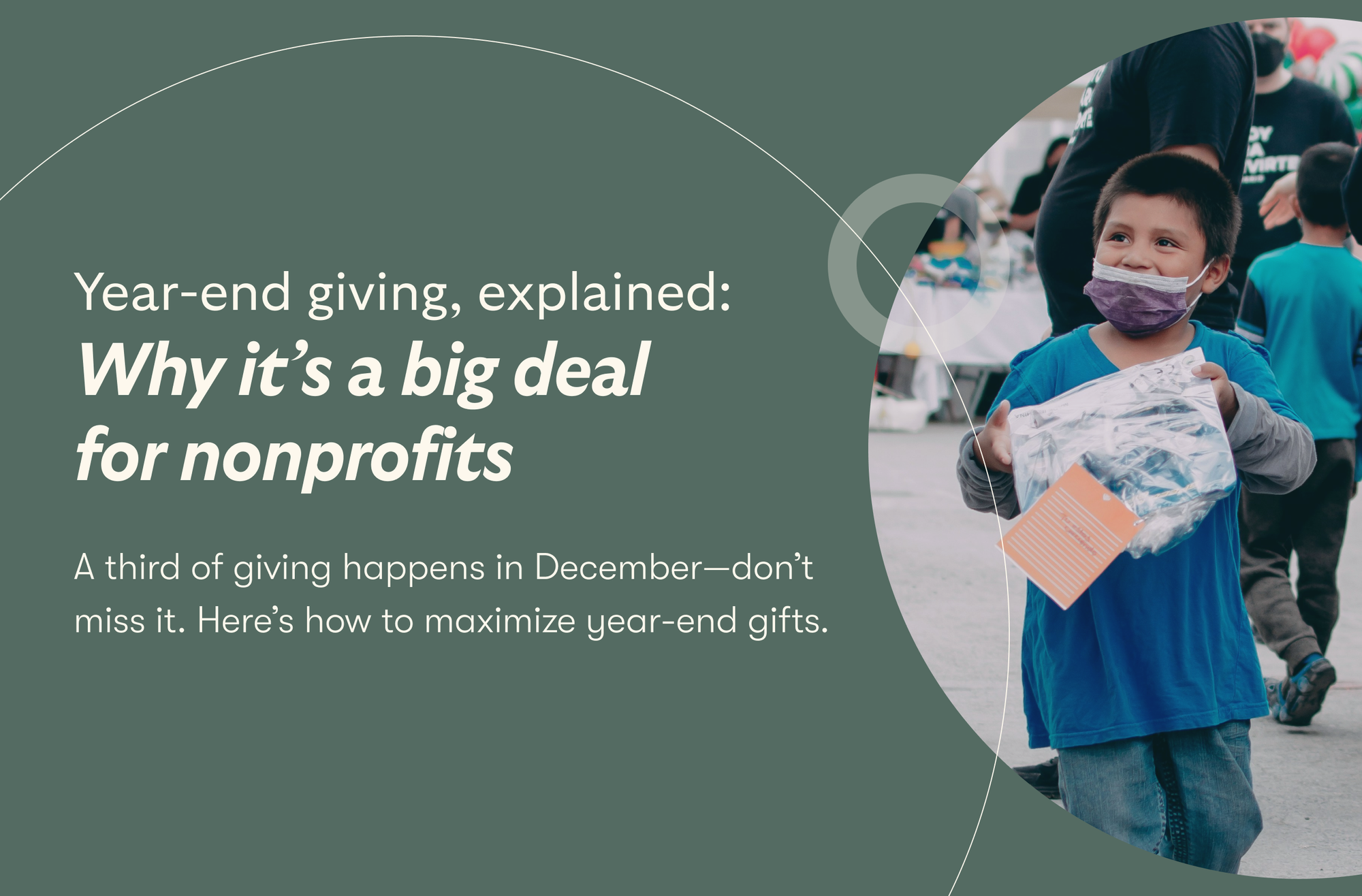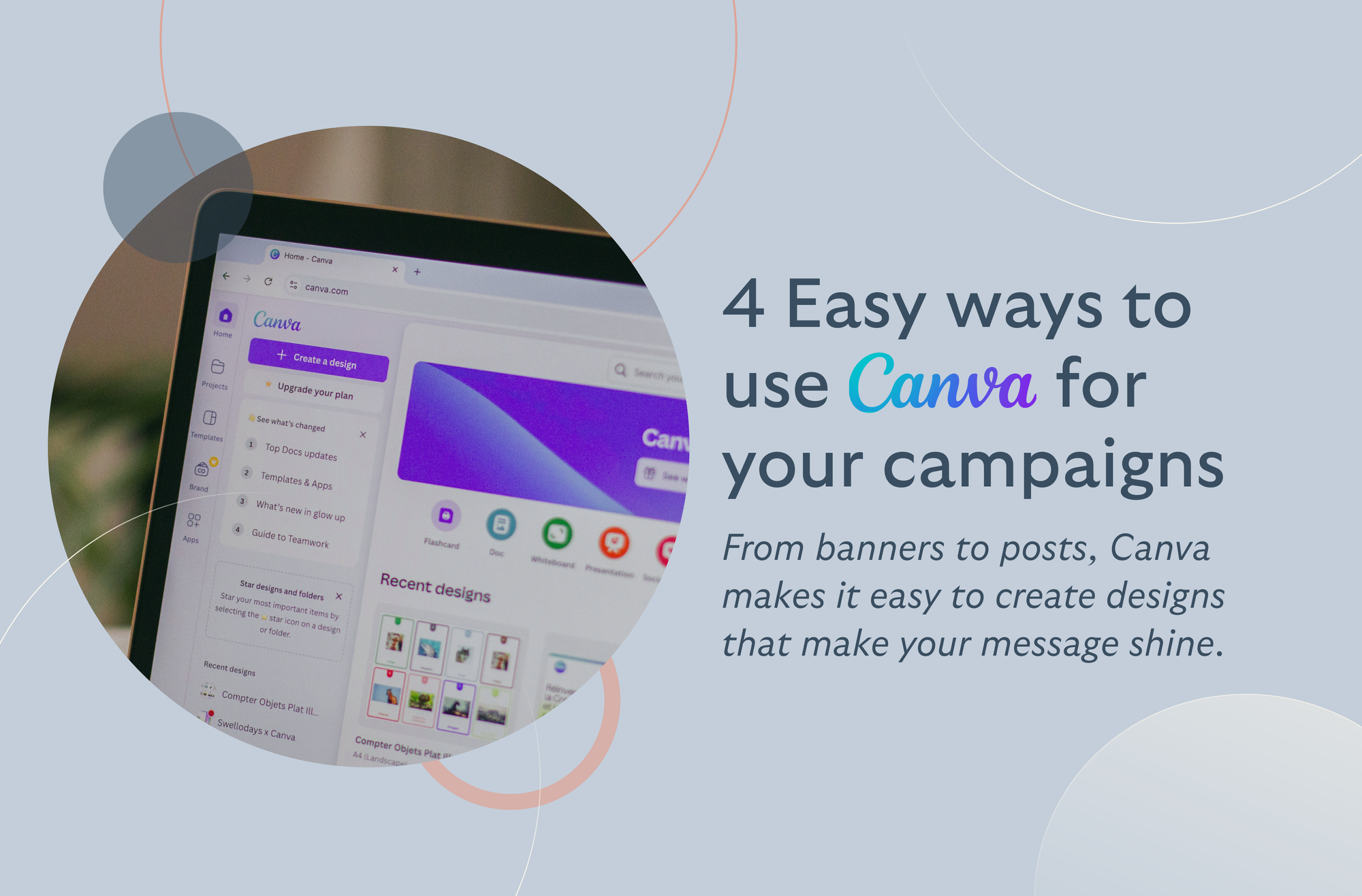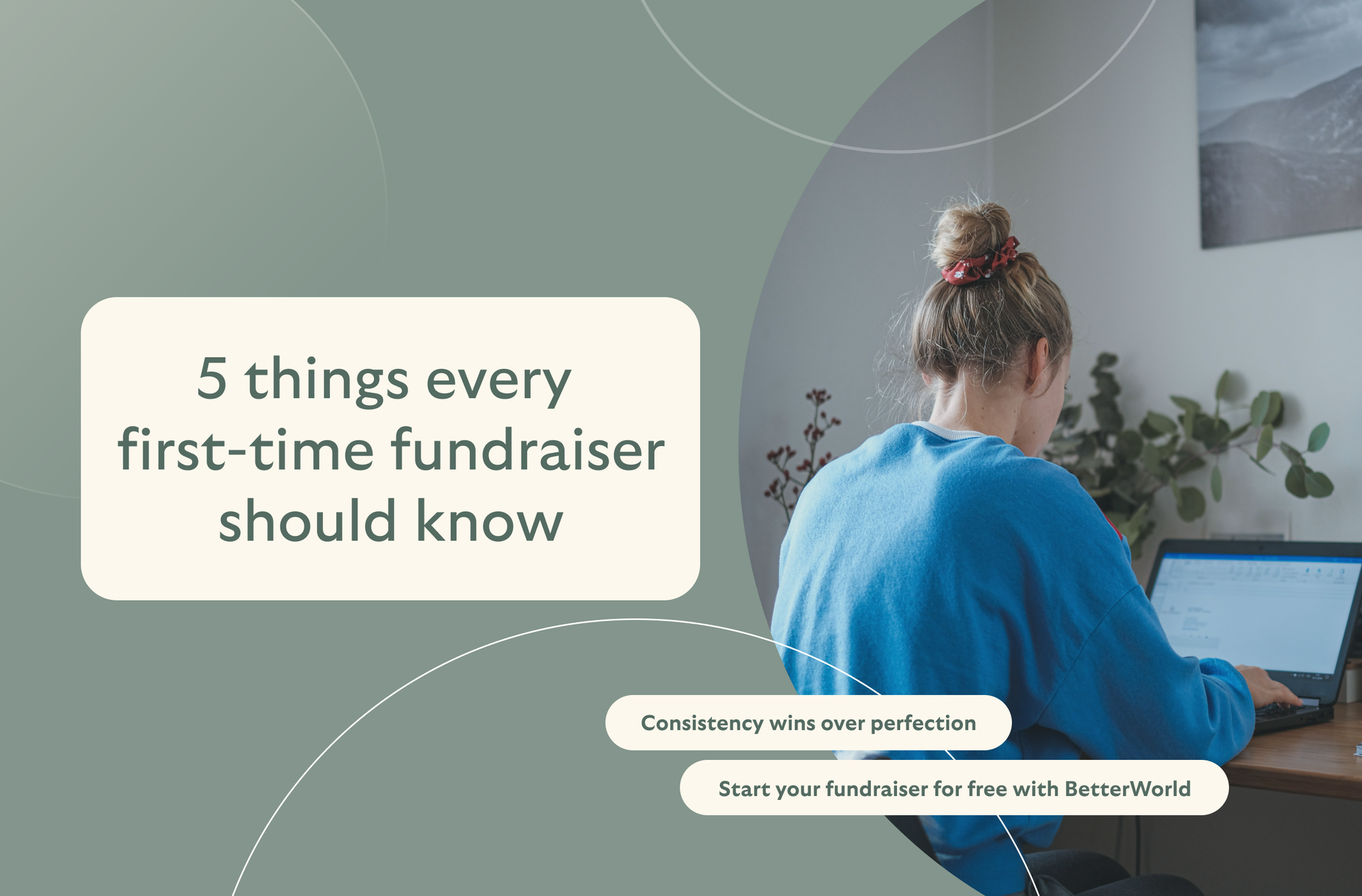Drive excitement for your event by embedding videos and livestream options
Set up recurring donations so people can give to your crowdfunding anytime
Customize default donations to make giving easier.
Offer unique and fun prizes and rewards
How to Get the Funds You Need for 2025
By Colin Hunter

If you can believe it, 2025 is right around the corner, and with it comes the chance to refresh your nonprofit’s fundraising approach. If you're planning an annual fund campaign or focusing on your annual fundraising strategy, now is the time to think ahead and take steps to secure the support you need.
Many nonprofits find the start of the year challenging, especially in gathering enough resources to reach their mission. If you’re feeling overwhelmed, know you’re not alone. A clear plan can make all the difference.
In this guide, we'll talk about practical steps you can take to get ready for 2025. Stick around, and we'll make sure you’re prepared to bring in the funds your nonprofit needs—not just for now, but for a strong year ahead.
Top Nonprofit Funding Sources
Where should you start, and what funding sources will work best for you? The good news is that plenty of options are available if you're planning an annual fundraising drive or a specific campaign to meet yearly goals.
It's all about finding the right mix of funding sources that fits your nonprofit's mission and community.
1. Grants
Grants are a powerful tool for nonprofits planning their annual fundraising plan for 2025. They provide financial support from various sources, including government agencies and private foundations, that doesn't need to be repaid.
For government grants, programs like the Community Development Block Grant (CDBG) help nonprofits in areas like housing, economic development, and public services. You can also explore federal opportunities on grants.gov, where nonprofits can find specific grants for different sectors, from education to environmental projects.
Private sector grants are also key players. Corporations like the Walmart Foundation offer community grants ranging from $250 to $5,000.
Another example is Google Ad Grants, which gives nonprofits up to $10,000 monthly in free advertising to raise awareness for their causes.
Competitive grants typically require detailed plans and a clear case for how the funding will be used, so an annual fund campaign can strengthen your proposal. Some grants are designed to match donations from individual supporters, which can help amplify your efforts.
Pro: Grants can provide large sums of money, sometimes in the tens of thousands or more, which can significantly boost your annual fundraising goals.
Con: The application process, with fierce competition, can be time-consuming and may require detailed reporting and compliance with specific conditions.
2. Membership Fee
Membership fees are a reliable way to raise funds for your nonprofit and build a community of dedicated supporters. By charging an annual or monthly fee, nonprofits can secure a steady income stream to help fund their programs throughout the year.
Your nonprofit can set up different membership levels with varying benefits to raise funds through membership fees. These might include exclusive access to events, behind-the-scenes content, or discounts at partner businesses.
Many nonprofits offer flexible payment options, such as annual or monthly memberships, to cater to a wider audience. For example, some people may prefer smaller monthly payments, while others might be comfortable paying a larger annual sum upfront.
To attract new members, consider running annual fundraising campaigns or events to showcase the benefits of membership, such as hosting a charity golf tournament or networking events where potential members can learn more about your mission.
It’s also important to market your membership program through your website and social media channels to ensure people know how to join.
Pro: Membership fees offer a predictable and stable income.
Con: Some people may find it difficult to pay the membership fee upfront, which could discourage them from joining.
3. Individual Donations
Individual donations from alumni, volunteers, and previous donors are vital in nonprofit funding.
These groups are already connected to your cause, which makes them more likely to continue supporting your mission financially. Volunteers, in particular, are 66% more likely to donate to the organization they support than those who don’t volunteer their time. (Source)
To raise funds from individual donations, segment your donor base.
- Alumni might respond to campaigns focused on initiatives they participated in, like scholarships or community projects.
- Volunteers already committed to your cause could be encouraged to give by showing them the impact of their time and financial contributions.
- Regular communication with past donors—through newsletters or event invitations—can help keep them engaged and informed on how their donations are making a difference.
Besides, your annual fundraising plan must have a recurring donation option to create a steady funding stream. This makes it easier for donors to give smaller amounts regularly and provides your organization with a predictable income.
Did you know that 67% of nonprofits across the globe are set up to accept online donations? (Source)
So, why not make the donation process easy by signing up with BetterWorld? We offer Free Donation Software for nonprofits to help with recurring donations, offline donations, and much more!
Request a demo today and get the most out of your donations with ZERO FEE!
Pro: Individual donations provide a reliable, long-term funding source, especially when donors are engaged and feel connected to your mission.
Con: Building and maintaining these relationships takes time and effort, and the results may take a while to develop.
4. Crowdfunding
Crowdfunding is an excellent way for nonprofits to raise funds by using the power of small donations from many people. Typically hosted on online platforms, crowdfunding allows nonprofits to reach a large audience through social media and online networks.
Recent statistics show that the average amount raised by organizations in 2023 through crowdfunding was an impressive $9,237.55. (Source) This makes it an attractive option for your annual fundraising plan.
To raise funds via crowdfunding, choose a platform that aligns with your goals, such as BetterWorld. Our platforms allow you to create a visually appealing campaign with stories and videos that emotionally connect potential donors to your cause.
Setup takes less than 5 minutes, and you pay ZERO fees. Yes, that's right. BetterWorld is Forever Free. No hidden charges and no platform fee.
Sign up today to get the funds you need for 2025!
Set clear goals and provide regular updates to keep your audience engaged throughout the campaign. You can promote the campaign and reach a broad audience using social media and your network.
Pro: Crowdfunding can help you raise significant funds quickly, especially with effective promotion and storytelling.
Con: It can be hard to stand out in fierce competition with other campaigns.
5. Peer to Peer Fundraising
Peer-to-peer fundraising is where your supporters take the lead in raising money for your nonprofit by reaching out to their own networks. They create personalized fundraising pages, share your mission, and ask friends, family, and colleagues to donate.
Including peer-to-peer campaigns in your annual fund plan will help diversify your revenue streams and deepen engagement with your supporters.
To raise funds from peer-to-peer for 2025, begin by selecting a user-friendly platform like BetterWorld, which allows your supporters to set up and manage their donation pages easily.
Encourage your fundraisers to share these pages through social media, email, and other communication channels. Hosting virtual events like fitness challenges or walks can motivate participants to rally their networks.
One key advantage of peer-to-peer fundraising is its high success rate. Recent data shows that peer-to-peer fundraising initiatives have a 71% success rate. (Source)
Pro: Peer-to-peer fundraising helps you expand your donor base and build stronger community support, all while keeping direct costs low.
Con: You have less control over messaging, which can lead to inconsistencies in how your cause is presented.
6. In-Kind Donations
In-kind donations are non-cash contributions like goods, services, or expertise. These donations help reduce costs and allow nonprofits to allocate more funds toward programs and projects.
Common in-kind donations include office supplies, professional services (like legal advice), and items for fundraising auctions or events. Interestingly, 81% of donors contribute food or other goods through in-kind donations. (Source)
Identify what your organization needs most and reach out to potential donors. Companies, local businesses, and even individuals are often willing to donate products or services that align with your nonprofit’s mission.
Promoting in-kind giving opportunities on your website, social media, and newsletters can help attract support. For example, a local business might donate event space for your annual fundraising, or an accountant could offer pro bono services, allowing you to save on expenses.
Pro: In-kind donations reduce your costs and free up cash for other essential projects within your annual fund campaign.
Con: You might receive items that don’t meet your immediate needs, leading to storage or logistical issues.
7. Sponsorship
Sponsorship is a valuable way for nonprofits to partner with businesses for mutual benefit. Companies often look for opportunities to enhance their corporate social responsibility (CSR) by sponsoring nonprofit events, programs, or campaigns.
In exchange, the nonprofit provides visibility for the sponsor through branding opportunities, event recognition, or acknowledgment in promotional materials. This relationship brings in funding for the nonprofit and helps the company improve its public image and community engagement.
You can create a sustainable source of support for your nonprofit’s annual fund campaign by building solid and long-term relationships with sponsors,
- Start by identifying businesses with values and missions similar to your nonprofit's.
- Create a proposal outlining the benefits the business will gain by sponsoring your organization, such as brand visibility or networking opportunities with other supporters.
- Tailored sponsorship packages, offering different levels of recognition, can be attractive to potential sponsors.
- Additionally, events like galas or community gatherings can be great opportunities to invite sponsors to participate.
Pro: Sponsorships can provide steady and significant funding. It is a reliable addition to your annual fundraising plan.
Con: Securing and maintaining corporate sponsorships requires effort, relationship-building, and ongoing communication.
Easy and effective crowdfunding campaigns? BetterWorld got you covered!
8. Fundraising Events
Fundraising events are a powerful way for nonprofits to raise money and connect with donors. These events allow supporters to engage with your mission meaningfully while helping fund your cause. In fact, 81% of US donors attend nonprofit fundraising events. (Source)
Events can take many forms, such as galas, auctions, or even virtual gatherings, giving your organization the flexibility to reach a broad audience. With these events included in your annual fund plan, you can create engaging opportunities for donors and volunteers to support your mission.
Start by designing unique experiences that appeal to your donors. A virtual auction, for example, allows attendees to bid on items from the comfort of their homes using mobile bidding software. At the same time, a hybrid gala can engage both in-person and online participants.
Along with ticket sales and donations, events provide opportunities for sponsorships, further boosting your revenue and supporting your annual fund campaign. Additionally, 85% of US donors volunteer, which means events can also serve as a chance to recruit volunteers. (Source)
Pro: Fundraising events provide personal, memorable experiences that strengthen donor relationships and encourage long-term support.
Con: These events can be expensive and time-consuming to plan, potentially cutting into the funds raised.
9. Selling Services or Goods
Selling services or goods is a great way for nonprofits to diversify their funding. Nonprofits can sell branded merchandise, educational resources, or services related to their mission, like training programs or consulting.
Including product sales in your annual fundraising plan or annual fund campaign allows you to generate additional revenue while keeping supporters engaged.
- First, choose items or services that closely align with your mission. For example, an environmental nonprofit might sell eco-friendly products or host workshops on sustainable living.
- Nonprofits can sell these items through online platforms, at events, or via social media campaigns, which allows them to reach a broad audience.
- Offering merchandise, like t-shirts or tote bags with your nonprofit's logo, also helps boost brand visibility.
Pro: Selling goods or services provides a stable, ongoing revenue source, reducing reliance on one-time donations and grants.
Con: Nonprofits must be careful about unrelated business income tax (UBIT), as revenue from goods or services unrelated to the organization’s mission may be taxable.
10. Legacy Gift
Legacy gifts, or planned gifts, are donations that supporters leave to nonprofits in their wills or estate plans. These gifts can be in the form of money, stocks, property, or other assets.
They allow donors to make a lasting impact on a cause they care deeply about, often enabling them to give more than they could during their lifetime. A typical planned gift is 200 to 300 times the size of a donor's largest annual gift. (Source)
It’s important to educate your donors about the opportunity. Many donors are unaware of this option, so promoting it through newsletters, social media, and direct outreach can spark interest.
Hosting informational events, offering legacy planning resources, and collaborating with estate planners can help donors understand the benefits of including your nonprofit in their estate plans. Clear communication on how their legacy will impact the organization can make a big difference in securing these gifts.
Legacy gifts can provide a steady and predictable income stream, helping nonprofits plan long-term and secure future program funding. Including legacy giving as part of your annual fundraising plan also strengthens the financial foundation of your nonprofit.
Pro: Legacy gifts are often large, unrestricted donations that can significantly boost your nonprofit’s future projects.
Con: These gifts may not result in immediate funds, as they are typically received after the donor’s passing.
11. Board Members
Board members play a crucial role in nonprofit fundraising. These individuals often bring valuable networks, expertise, and credibility to an organization and can significantly contribute to direct donations and broader fundraising efforts.
Board members can support by making personal donations, soliciting funds from their networks, and helping to plan or promote fundraising events.
Ensure they are well-trained and equipped with the tools to fundraise effectively. This might include providing them with talking points and donor information and even organizing small events where they can connect with potential donors.
Additionally, 100% participation in giving should be encouraged. Whether through direct donations or facilitating introductions to key stakeholders, having all board members actively engaged in fundraising is critical for building momentum and setting an example for other donors.
Incorporating board member fundraising into your annual fund campaign is essential for sustainability. It raises money and strengthens donor trust and organizational credibility when board members actively raise and contribute funds.
Pro: Board members can use their networks to bring in new donors and resources, which can significantly expand the reach of your annual fund campaign.
Con: Not all board members are comfortable with or experienced in fundraising, which can require additional training and support to ensure success.
12. Corporate Partnerships
Corporate partnerships offer nonprofits more than just a one-time donation or event-based support.
Unlike sponsorship, which is often limited in scope and duration, partnerships can be extensive and involve joint branding, co-creation, and shared decision-making. These partnerships are designed for long-term collaboration and provide financial support and access to a corporation's resources, such as its networks, expertise, and volunteers.
To raise funds, identify companies that align with your nonprofit’s mission. For example, a nonprofit focused on education could partner with a tech company to provide digital learning tools to underserved communities.
These partnerships can also involve cause marketing, where a business donates a portion of sales to your nonprofit, or through employee engagement programs, where companies encourage staff to volunteer with your organization.
Pro: Corporate partnerships provide reliable, long-term support and can open up new opportunities for growth and exposure. It can significantly benefit your annual fundraising plan.
Con: Forming and maintaining these partnerships can take significant time and effort, as they often involve more extensive collaboration than simple sponsorships.
Need help figuring out how to start an annual giving campaign? Read our guide on Setting Up Your Annual Giving Campaign: Step-by-Step Guide.
13. Fundraising Campaigns
Fundraising campaigns are traditional methods for nonprofits to raise money while engaging their communities directly. These campaigns include events such as walk-a-thons, raffles, community carnivals, and more.
Unlike online campaigns, offline events offer a personal touch, encouraging face-to-face interaction and deeper community involvement. They also create a fun, interactive environment that draws attention to your cause and helps build long-term support.
Consider organizing marathon-style events like walk-a-thons or bike-a-thons, where participants raise money through sponsorships based on their performance. Community raffles are another popular choice, where donors buy tickets for a chance to win donated prizes. Events like carnivals or cook-offs bring in donations through ticket sales, activity fees, or sponsorships.
Adding these types of events to your annual fundraising can help boost your nonprofit’s visibility and financial support.
Pro: Offline events create opportunities for personal interaction, building stronger relationships and a sense of community around your nonprofit.
Con: These events can be costly and time-consuming to organize, which might impact the overall funds raised
14. Investment Income
Investment income can be an effective way for nonprofits to grow their funds over time by investing in stocks, bonds, or other financial instruments. Instead of relying solely on donations or grants, nonprofits can create a diversified investment portfolio that generates returns to support their mission.
This approach helps ensure long-term financial stability and resilience, especially during uncertain fundraising periods. By carefully investing excess cash, nonprofits can create a reliable income stream that contributes to their annual fundraising plan.
- Your nonprofit should establish an Investment Policy Statement (IPS) to raise funds through investments. This document outlines the objectives, risk tolerance, and guidelines for how your nonprofit will invest its funds.
- Next, consider working with an investment advisor with experience in nonprofit investing to help manage the portfolio and ensure it matches your organization’s goals.
- Nonprofits can also choose socially responsible investments that align with their mission, further supporting their cause through strategic investing.
Pro: Investment income can provide a stable, long-term source of revenue. It can also reduce reliance on immediate fundraising efforts like events or grants.
Con: The initial setup requires careful planning, and there is always the risk that investments may not perform well, especially in volatile markets.
15. Online Fundraising
According to recent studies, 63% of donors prefer to give online using a credit or debit card, which makes online fundraising inevitable. (Source) Online fundraising allows nonprofits to use digital tools and platforms to reach donors.
With various options, including social media campaigns, email marketing, and virtual events, nonprofits can maximize their reach and engage existing and new supporters.
The best platform for online fundraising? BetterWorld. With completely free-to-use tools, you can take online fundraising to new heights. You will find everything under one roof, from live events to auctions and donations. Request a demo today to start your annual fund campaign the easy way!
Online fundraising will continue to remain an essential tool for nonprofits. Platforms like Facebook and Instagram also offer live-streaming options for interactive fundraising events where donors can contribute in real-time.
Another powerful strategy is text-to-donate, which simplifies the donation process by allowing supporters to give with just a few clicks on their smartphones.
Email campaigns also remain effective, particularly when segmented to target specific donor groups based on their interests or past giving patterns.
Pro: Online fundraising can quickly scale, reaching a global audience while offering flexible donation options.
Con: Consistency in management, strong digital marketing and regular engagement are required to maintain donor interest.
How to Select the Best Funding Source for Your Nonprofit
To help your nonprofit select the best funding source, ask some critical questions about your goals, resources, and needs.
- Does this funding source align with your mission? Make sure the funding source supports the values and mission of your organization. You want to avoid any potential conflicts that could misalign your work and the source's goals.
- What are the requirements? Different funding options, like grants or corporate sponsorships, come with specific conditions. Ask if your organization can meet those requirements, both in terms of reporting and spending limitations.
- What are your immediate and long-term financial needs? Start by evaluating your financial goals for the year. Will you need ongoing support through an annual fundraising plan, or are you looking for one-time funds for a specific project?
- What is the expected return on investment (ROI)? Not all funding options are equal. For example, organizing a large annual fundraising event might be costly and labor-intensive. You should weigh whether the income generated justifies the time and money spent.
- Do you have the capacity to manage this source? Each funding source requires different levels of administrative effort. For instance, grants often require a lengthy application and reporting process, while individual donations might need personalized follow-ups.
- Can this source help build community engagement? Funding sources like individual donations or memberships don't just provide money—they also help create a loyal community of supporters. This can be a key consideration for sustaining engagement and creating a dedicated base for future campaigns.
These questions will help you weigh the pros and cons of each funding option while ensuring the chosen source supports your nonprofit's mission and growth strategy.

Join 105,000+ amazing nonprofits, organizations, and fundraisers on BetterWorld

Let our FREE fundraising tools help you raise more funds with less effort








